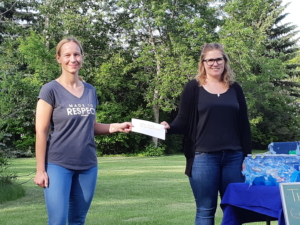How to talk to your children about their private parts – Topics for Parents Mini-edu Session
Topic: How to talk to your children about their private parts and teaching them the proper names for their private parts.
This information was compiled with the help of Mark, CASASC Child Therapist.
A critical tip for talking to children about private part names is that the conversation should not just happen once or twice, but becomes incorporated into the language in the home. This helps create an acceptability of the words and limits the times they are used in silly ways.
Parents should pay very close attention to the tone, volume and cadence they use when teaching the words. When the use of voice is not natural and has inflections in it, it can teach the child that their genitals are not equal to other parts of their body, which may contribute to shame.
Parents should discuss if they are both on the same page about using proper names for private part names. If you are giving nicknames to private parts, but not to the rest of the body parts, that may signal to the child there is something different about their private parts. Some experts in this field support the use of nicknames when nicknames are used for many other body parts, and the child knows the proper names.
There is a difference between having your child be sexually aware and learning about sexual intercourse. For young children they should learn to feel good about their body – both the parts that people see and the parts that are private for them to see. A children’s picture book such as Amazing You by Dr. Gail Saltz or What’s the Big Secret by Laurie Krasny Brown provide visuals and language that will help the child have a better understanding of the private parts of boys and girls and some of their functioning.
Leaving a book for the child to read on their own may feel more comfortable, but it discourages asking the questions that the child will immediately have and may show the child you are unwilling to talk about this topic.
Timing can be important in teaching the names of private parts to children. Opportunities when the child has demonstrated observations about their bodies, parts and the differences of gender should be honored by responding to what they see and are a teaching opportunity.
Parents will notice that talking to their children about their private parts will create automatic thoughts and feelings that are hard for them to control. The following thoughts will occur:
- Doubt in being able to say if right
- Failing their child in these talks which will cause harm to how they communicate with the child
- A parent will struggle that they are compromising their child’s innocence by giving to much information in this area.
- Talking to your child about their private parts will lead that child to tell their friends and lead to their parents not approving of your actions.
- When the parent goes to have this talk their own childhood experiences come back especially if it was lacking open and honesty in conversations.
- Fear that when the child realizes that their parts will change as they age may be scary and frightening.
One of the best ways to teach children, is to examine your own automatic thoughts and challenge the fears that you are having and where they might be coming from.
One good tip for teaching their children about the names of their private parts is to, at the same time, teach them about proper hygiene. Bath time can be a good opportunity to complete both tasks. They can learn the names of different parts of their body, some of their functioning depending on the age, and you can add how they can properly wash their body parts and understanding why we do so.
Another resource that parents can depend on for the same topic is this book The New Speaking of Sex: what your children need to know and when they need to know it by: Meg Hickling, who is a RN who has been a sexual health educator for more than 25 years. Her ability to convey difficult material with sensitivity, gentle humour and warmth distinguishes her as a remarkable teacher and a role model.


